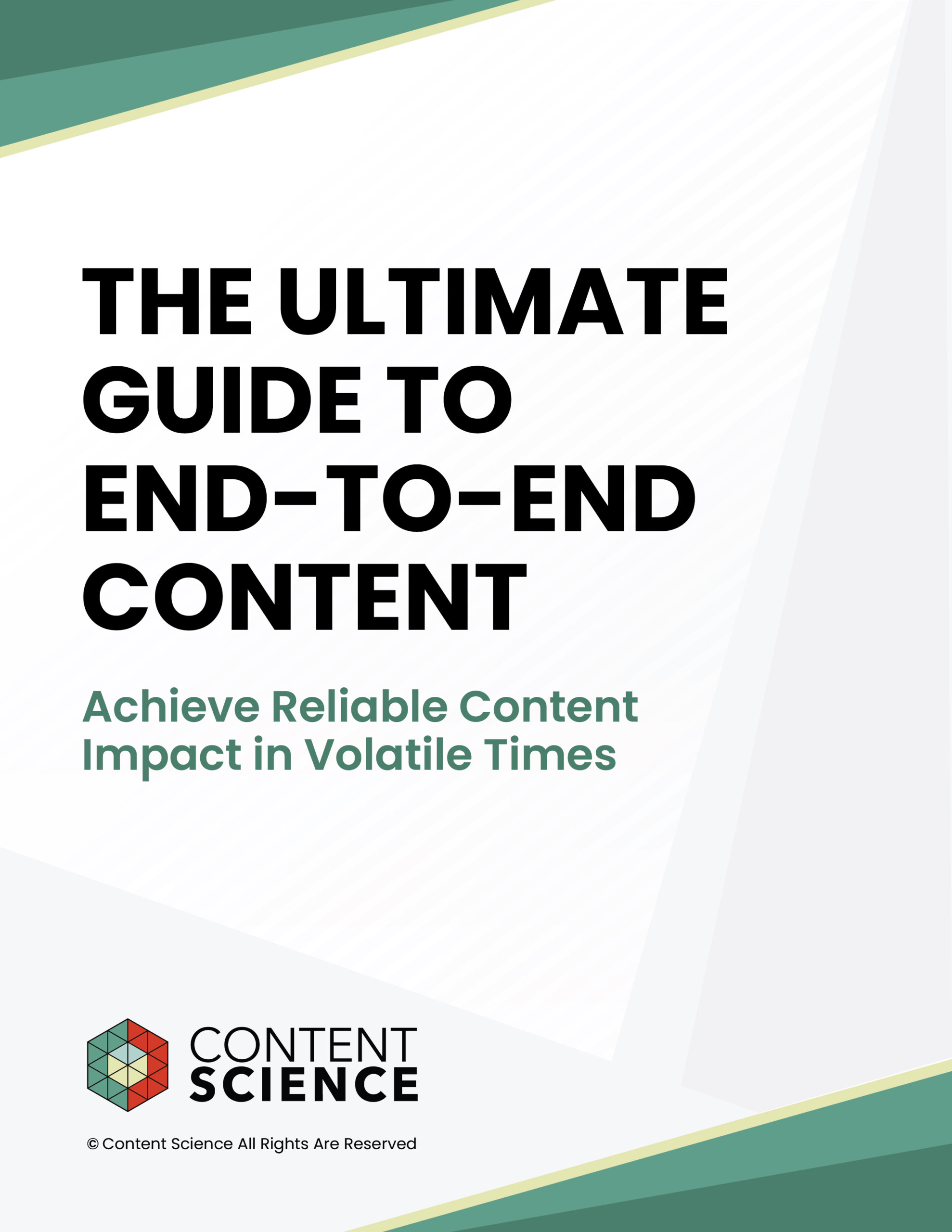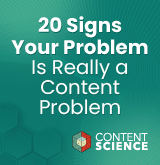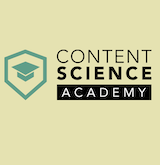
If your organization is serious about scaling artificial intelligence (AI), chances are it needs to close a big gap: content engineering. This article explains what content engineering is, why it matters, and how your enterprise can start to embrace it.
What Is a Definition of Content Engineering?
At Content Science, we define content engineering this way:
Content engineering is a discipline that focuses on designing, structuring, delivering, and managing content in a way that is strategic, scalable, and workflow-optimized.
As you might guess, it involves applying engineering principles—like modular content design, metadata frameworks, templating, automation, and governance—to support rich and consistent content delivery across digital channels.
Content engineering is of growing importance because the demand for content is intensifying. Content is anything but optional—smart organizations are making it a strategic business function. Enterprises must shift from random content production to holistic, end‑to‑end content approaches encompassing planning, creation, delivery, sustainability, and optimization and spanning entire customer journeys.
But most enterprises aren’t ready. I make this observation in The Content Advantage:
Most companies are underinvesting in content and underprepared for the intensifying demand as well as for the potential to use AI to help meet that demand.
Let’s take a closer look at the specific benefits of content engineering.
What Are the Top Benefits of Content Engineering for Enterprises?
Large organizations face complex content ecosystems spanning marketing, tech support, product info, customer success, internal communications, recruitment, and much more. Content engineering empowers them to realize benefits such as:
-
Scale content consistently: Modular, templated content reduces duplication, increases reuse, and speeds delivery.
-
Maintain content quality: Integrating standards and requirements into tools ensure accuracy and relevance.
-
Enable content automation & AI: With structured metadata and clearly defined repeatable workflows, AI tools can help produce and optimize content safely at scale.
-
Drive content ROI and efficiency: Higher maturity in content operations correlates strongly with better business outcomes.
Michael Andrews, content strategy evangelist and long-time advocate for structured content, puts it this way in The Content Advantage:
If you want to make your content more powerful–effective, influential, intelligent, able to scale, and efficient–be sure to add metadata so your employees, customers, and systems can find and act on the content they need. With the rise of AI, content metadata is more important than ever.
What Are Core Content Engineering Skills, Knowledge, and Tasks?
Content engineering complements related practices such as content strategy and content design as well as functions such as content operations. Timi Stoop-Alcala, a principal content strategist at IKEA, keeps this question top of mind in her work:
How might we mature our ways of working to effectively weave content strategy, content engineering, content design, and knowledge modeling into content operations and product development?
A person responsible for content engineering in a large organization typically works across content, technical, and strategic domains to either set up or improve upon a systematic content approach. A few examples include but are not limited to:
-
Content modeling & metadata strategies: Designing taxonomies, schemas, and metadata to support automation, content findability / searchability, content intelligence, content personalization, and more.
-
Templating & component-based design: Building modular content experiences via CMS, headless systems, or APIs.
-
Automation & tooling development: Integrating content workflows with automation, AI, and publishing pipelines.
-
Governance & operations maturity: Documenting processes, defining roles, enhancing automation of governance, and maintaining content lifecycle management.
-
Analytics & content intelligence: Structuring content to support more transparency into performance, more advanced analyses, and more granular insights.
Examples of Content Engineering in the Enterprise
In The Content Advantage and here on Content Science Review, I’ve mentioned or featured a wide range of enterprises that are making use of content engineering, such as Dell, Intuit, The Home Depot, Mailchimp, AT&T, Thomson Reuters, Atlassian, Mastercard, IKEA, and The Weather Channel.
Consider a few highlights:
-
Mastercard: Established and maintains an adaptive content design system that enables effective content design across touchpoints and devices.
-
Dell: Structured content across product, support, and marketing experiences with consistency and workflow rigor.
-
AT&T: Centralized content models, templates, and guidance to enable faster and better AI adoption.
-
Atlassian: Structured content enabling better personalization and findability for product release notes.
-
The Home Depot: Scaled order status content with modular components that also enable more testing and optimization.
While these examples are powerful, they tend to focus on a particular type of content or business function. The opportunity every enterprise faces today is to leverage content engineering more widely.
Eleni Demetriou of Mastercard also notes that systematizing content design through content engineering helps future-proof your organization’s approach to content:
Adaptive and device‑agnostic content strategies…ensures your content design system is ready to help you design for any interface and technology that comes your way, whether that’s now or in 3 years’ time.
Let’s look at some relevant trends.
What Are Current Trends in Content Engineering?
A few trends that affect content engineering now include:
AI Adoption: While individual use of AI is widespread, organization-wide deployment is slow because many companies lack the workflows and structure (such as metadata) needed to integrate AI safely across functions.
Rise of Headless + Digital Experience Platforms: Enterprises increasingly adopt composable architectures (e.g. headless CMS + frontend stacks) that benefit from structured, modular content engineering.
Content Intelligence Integration: Companies are embedding analytics and AI feedback into content workflows—automatically surfacing content decay, coverage gaps, or personalizing for user segments.
Content Personalization: Companies are looking for scalable ways to tailor content dynamically based on user behavior, context, and preferences.
In Summary
Content engineering isn’about writing, creating, or even managing content. It’s about applying systems thinking, engineering rigour, governance, and technology to manage content as a strategic business asset. Especially for large organizations, it delivers alignment, consistency, scalability, and lays the foundation for effective AI adoption.
Events, Resources, + More
The Ultimate Guide to End-to-End Content
Discover why + how an end-to-end approach is critical in the age of AI with this comprehensive white paper.
The Content Advantage Book
The much-anticipated third edition of the highly rated book by Colleen Jones is available at book retailers worldwide. Learn more!
20 Signs of a Content Problem in a High-Stakes Initiative
Use this white paper to diagnose the problem so you can achieve the right solution faster.
Upskill with Content Science Academy
Training for modern content roles through on-demand certifications + courses or live workshops.







Comments
We invite you to share your perspective in a constructive way. To comment, please sign in or register. Our moderating team will review all comments and may edit them for clarity. Our team also may delete comments that are off-topic or disrespectful. All postings become the property of
Content Science Review.